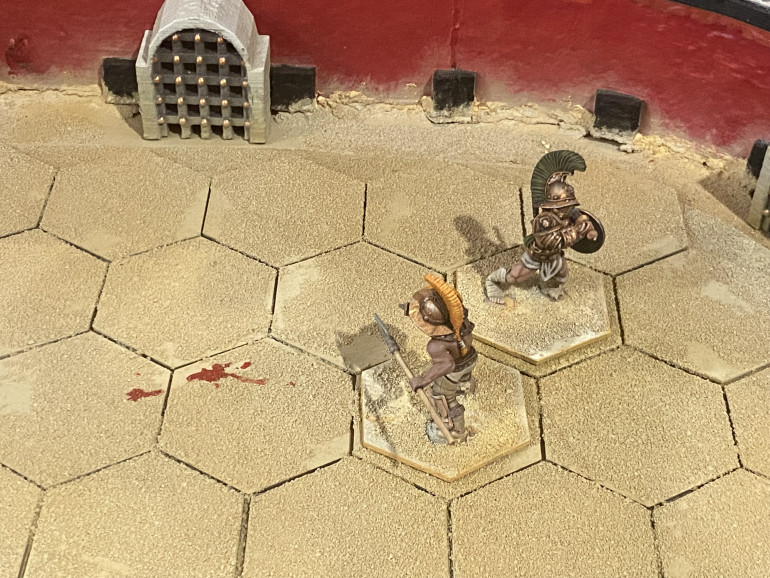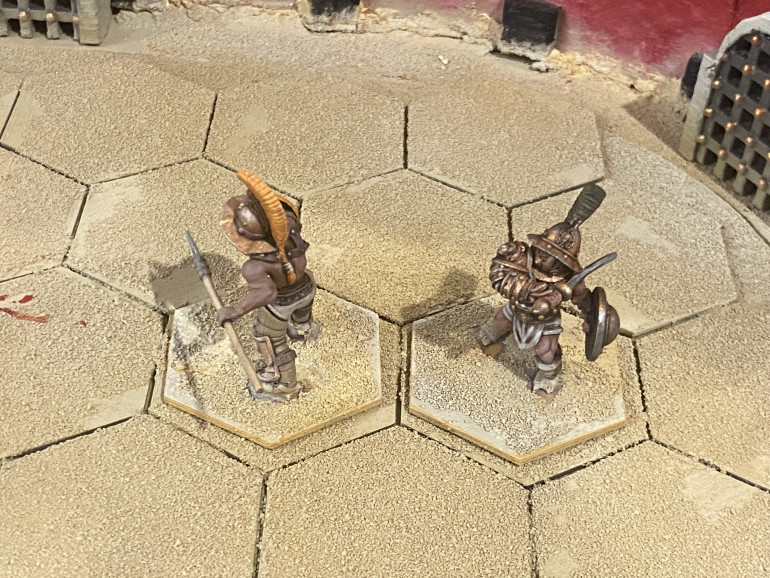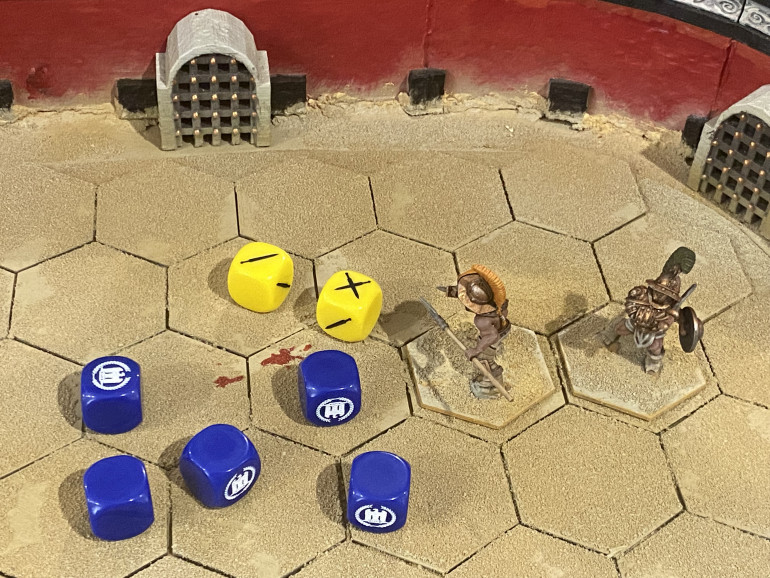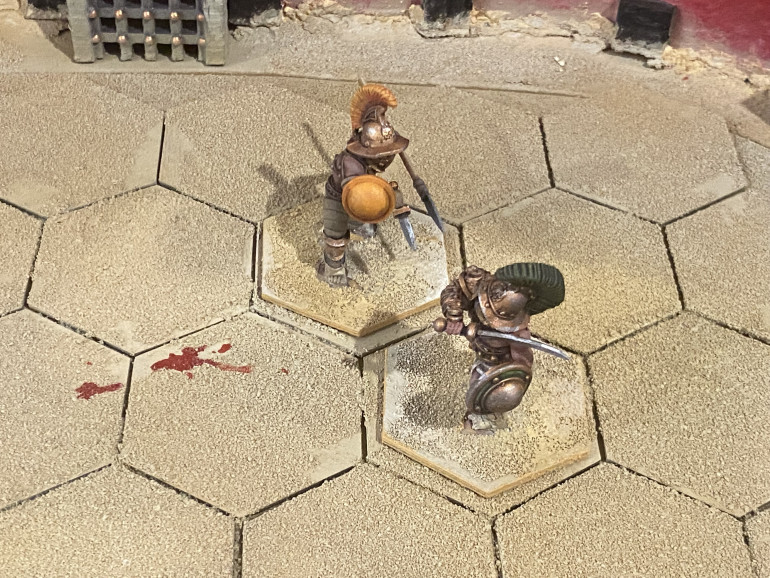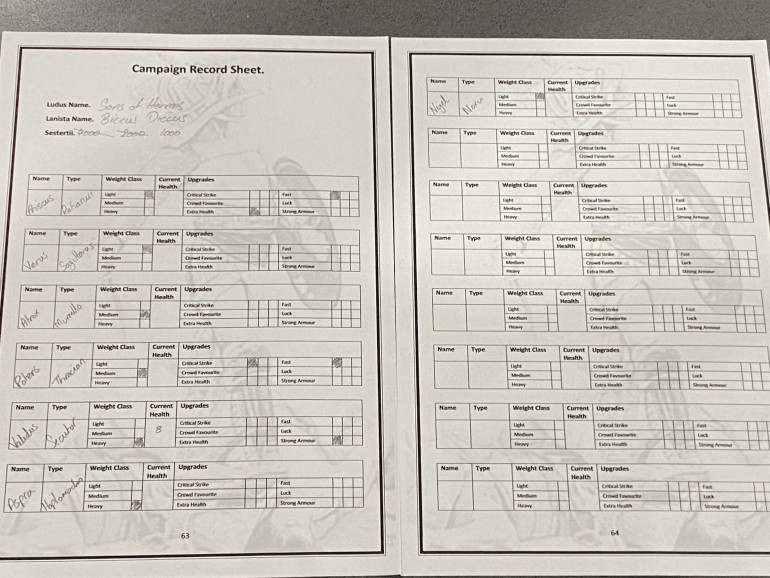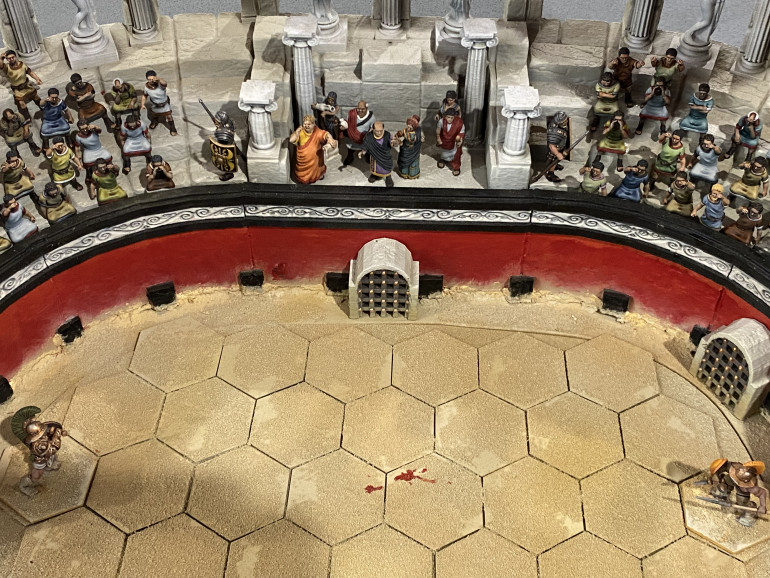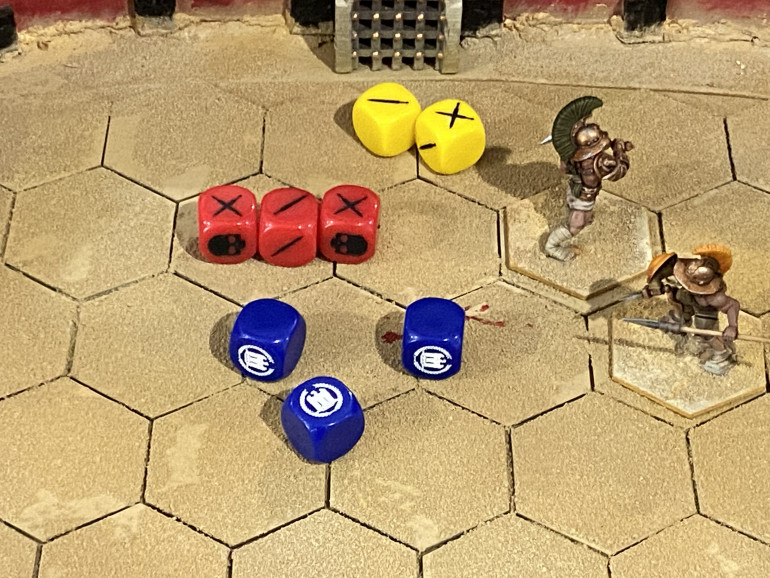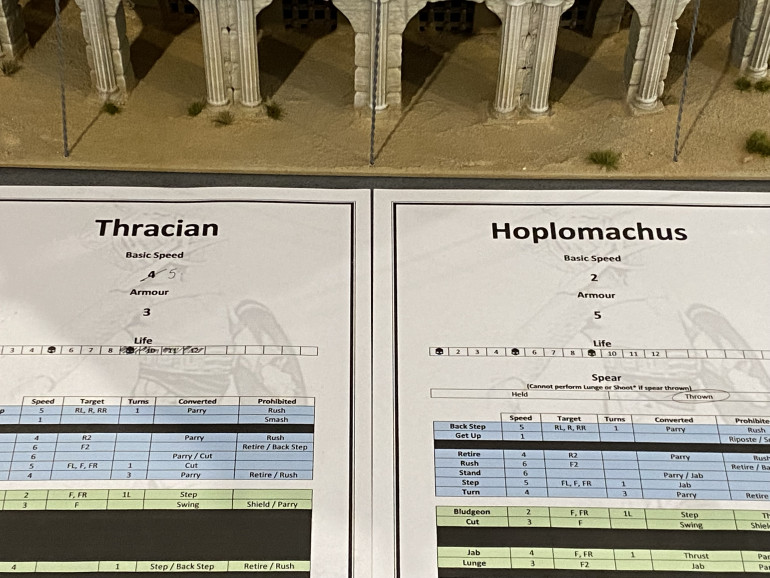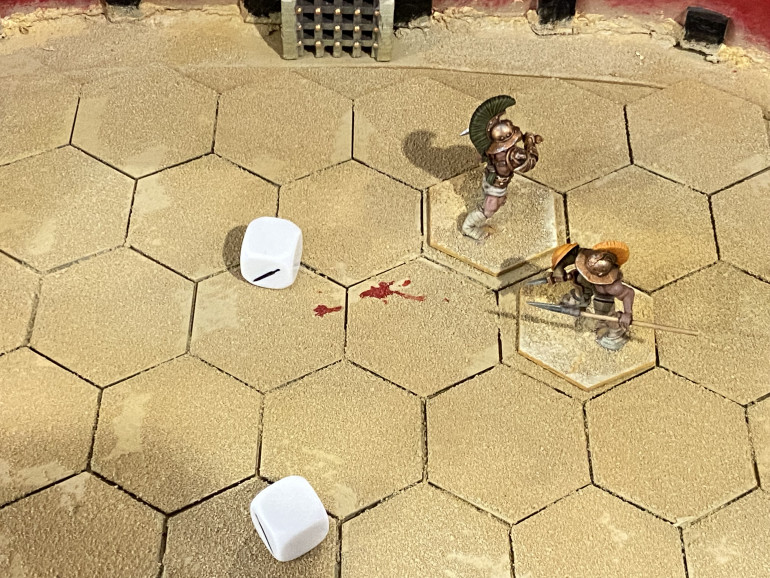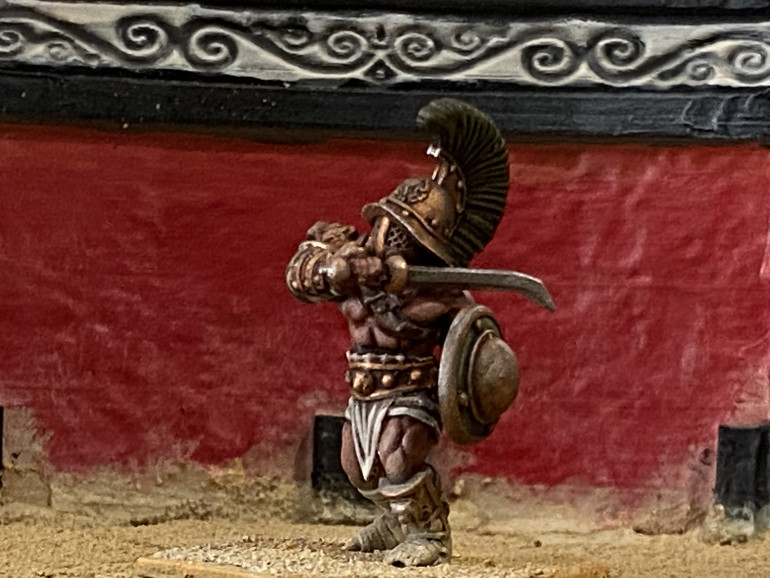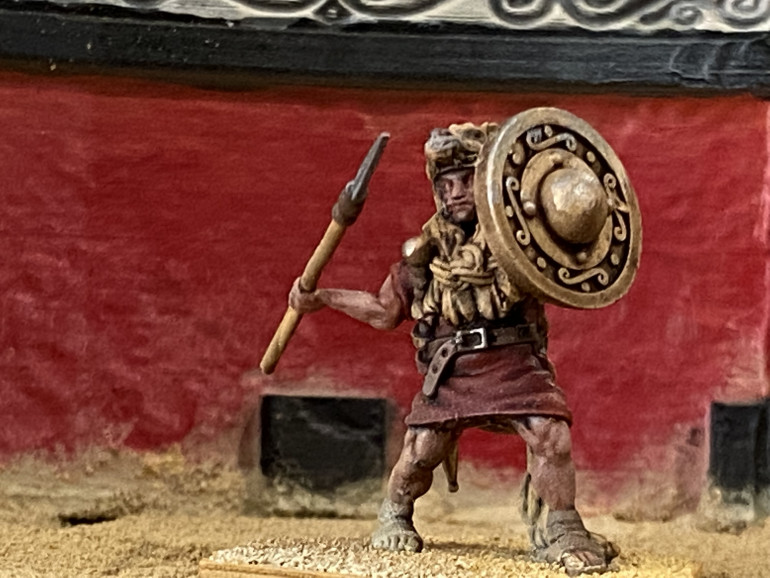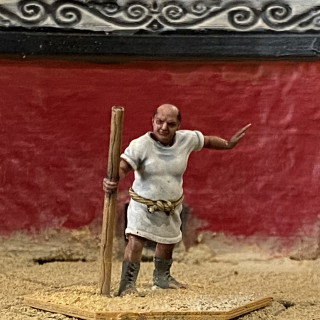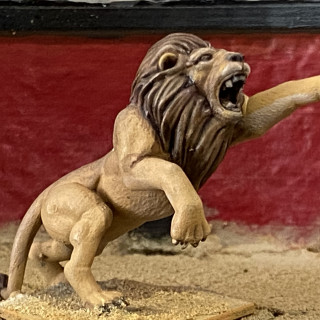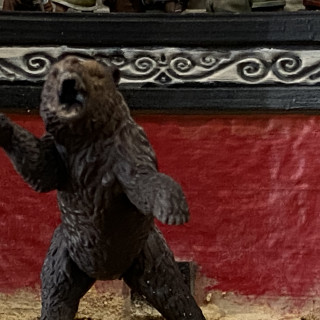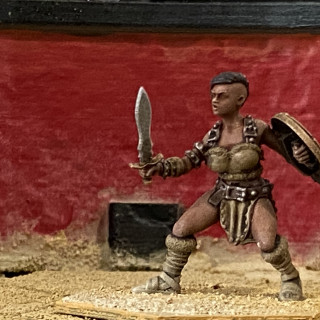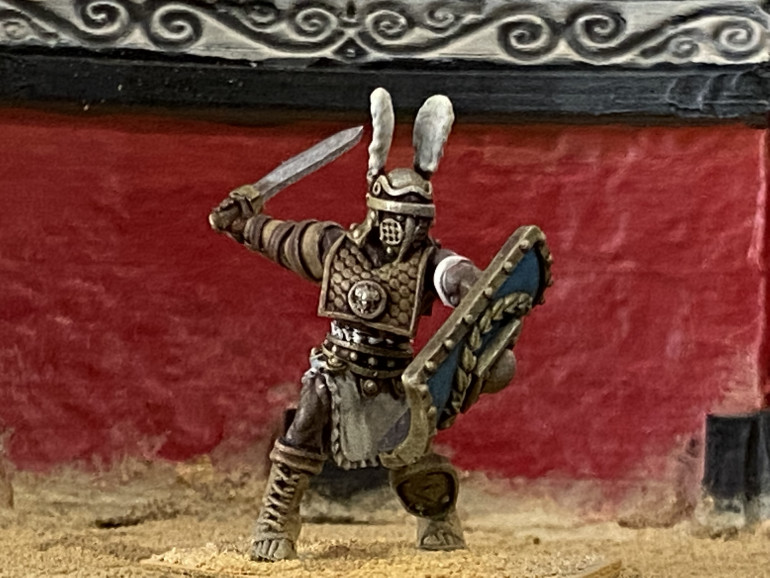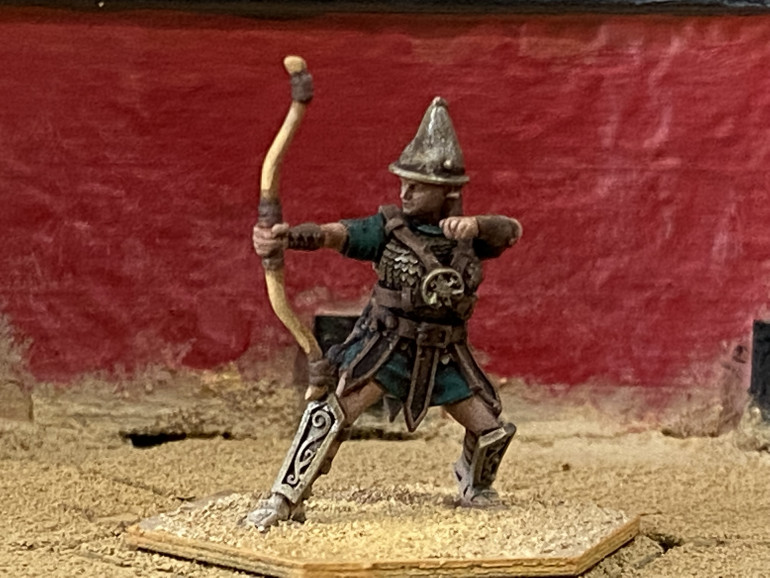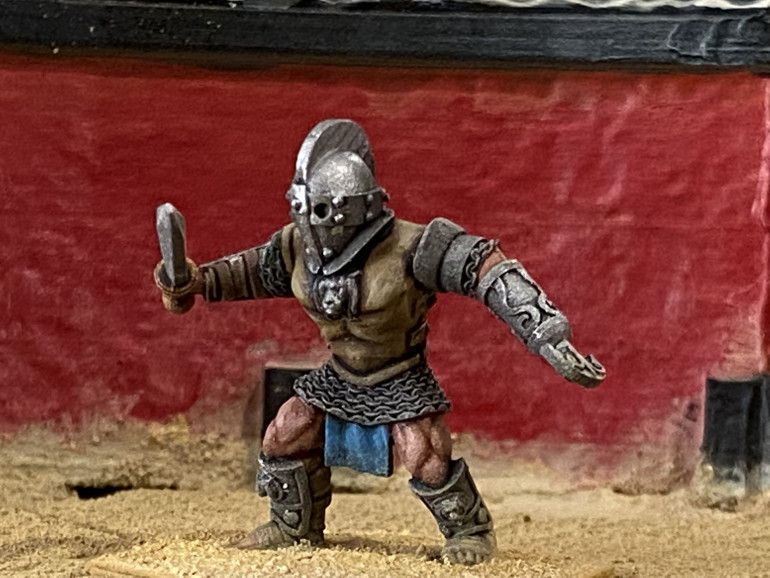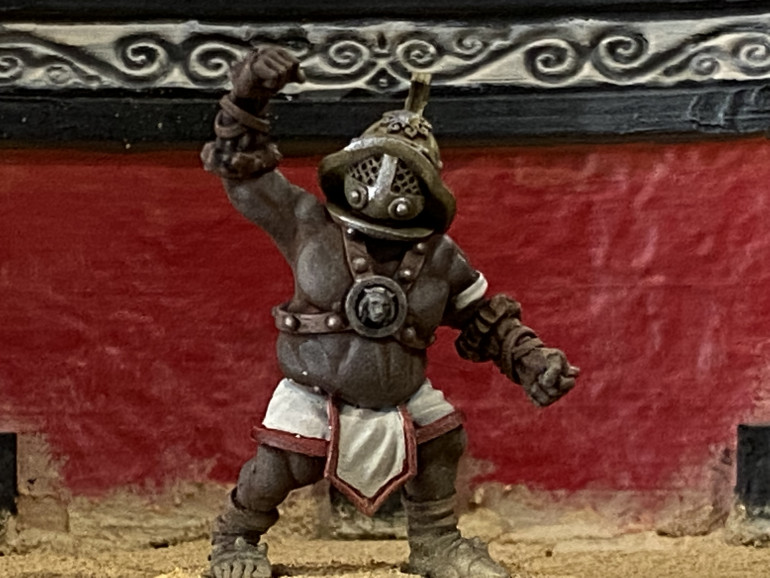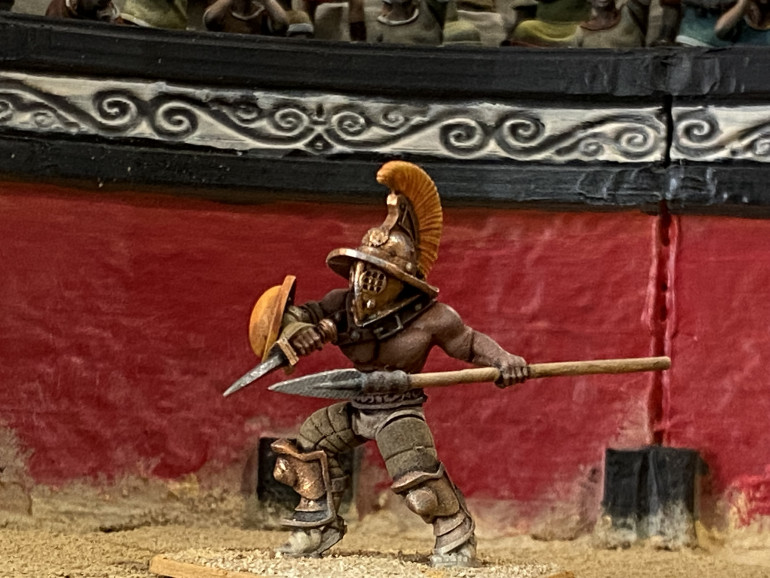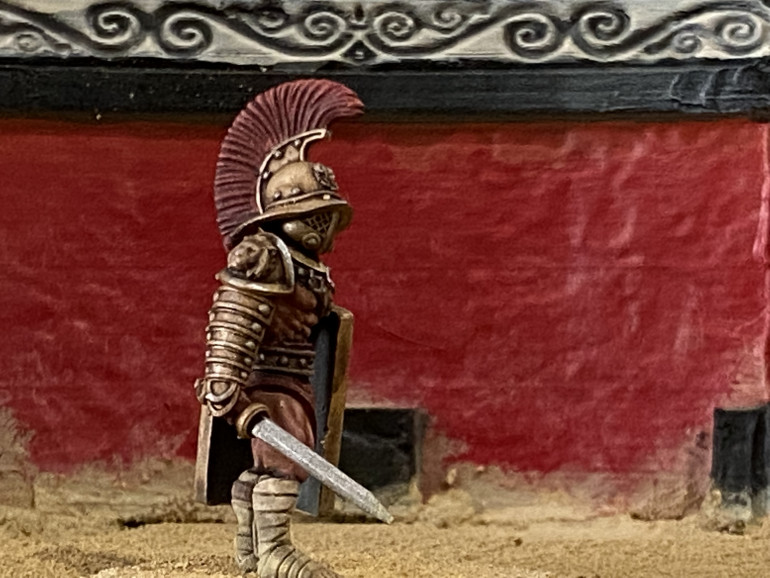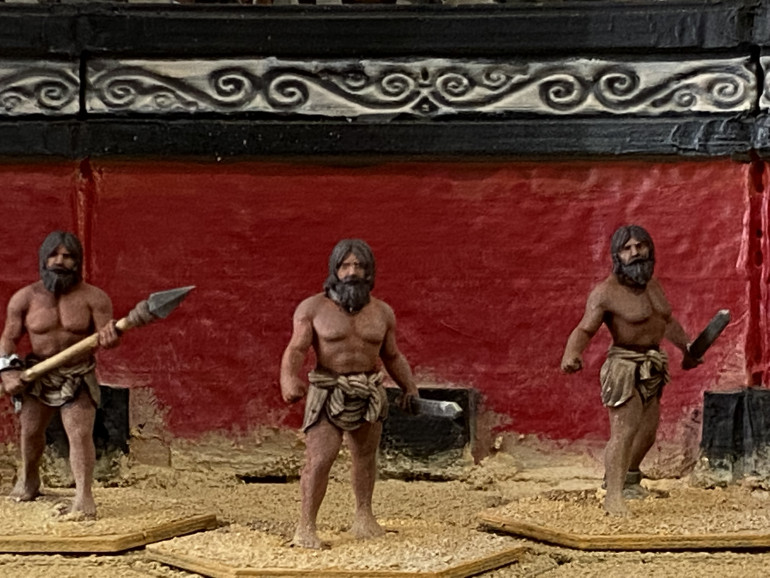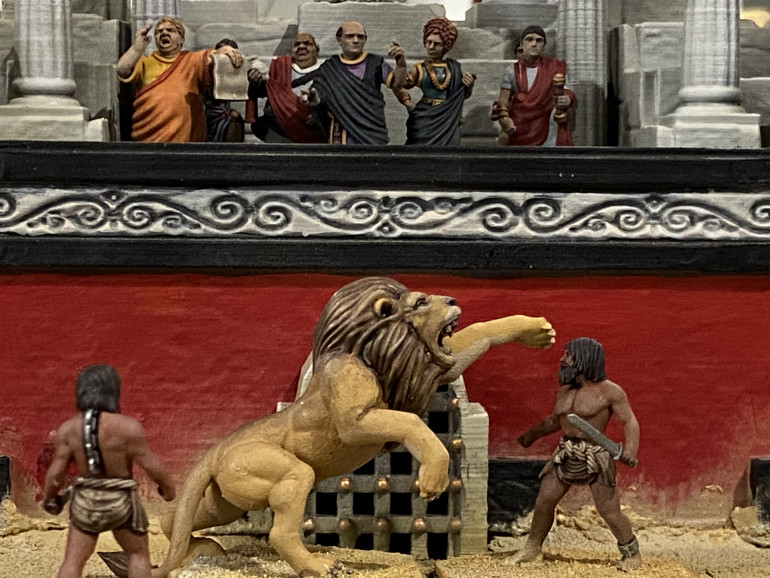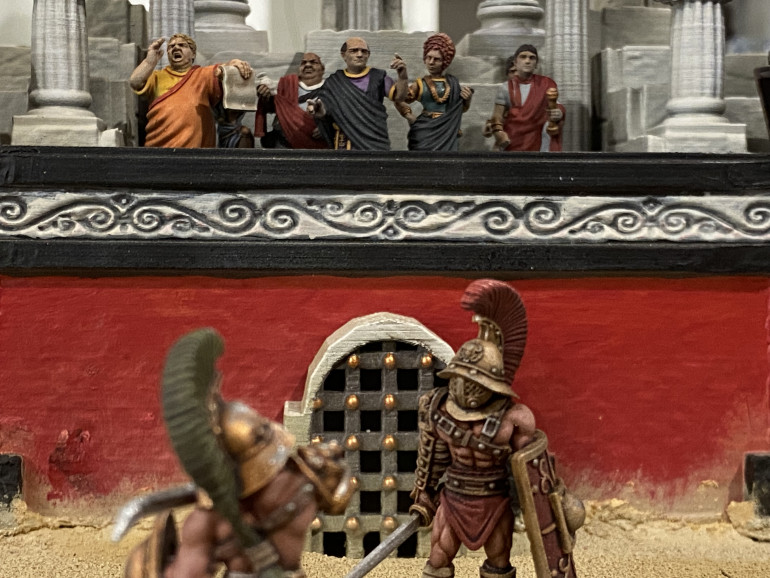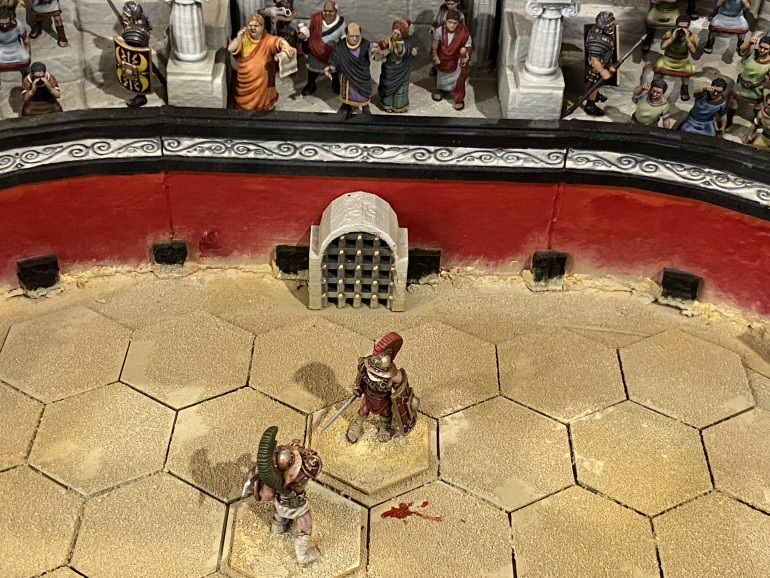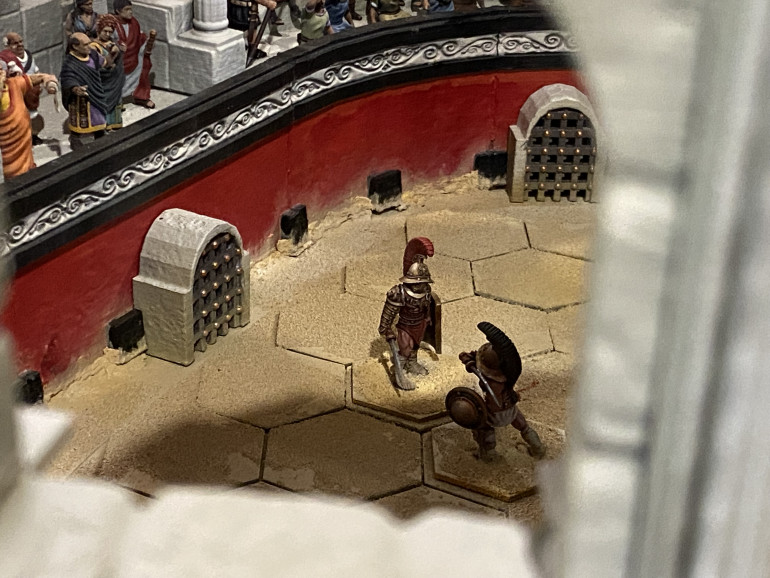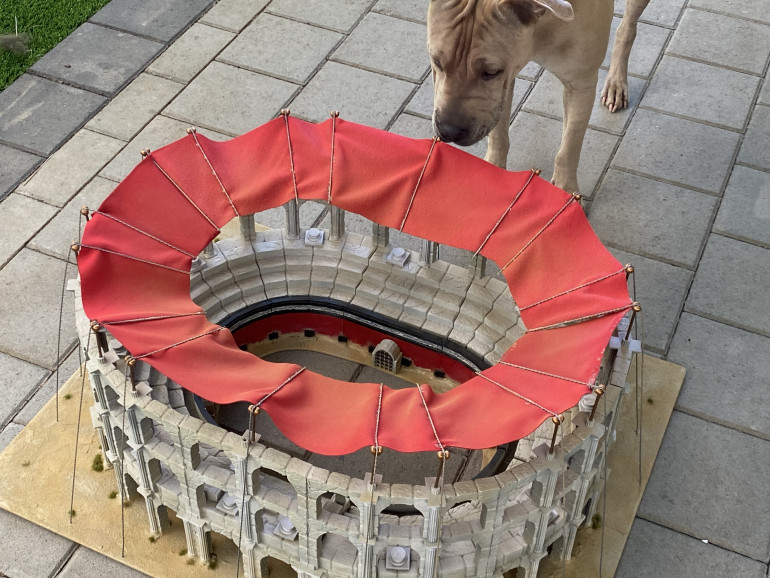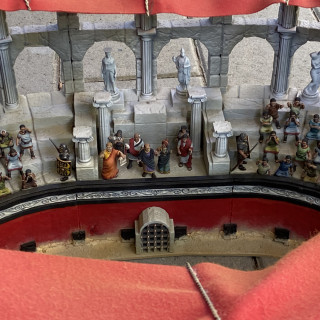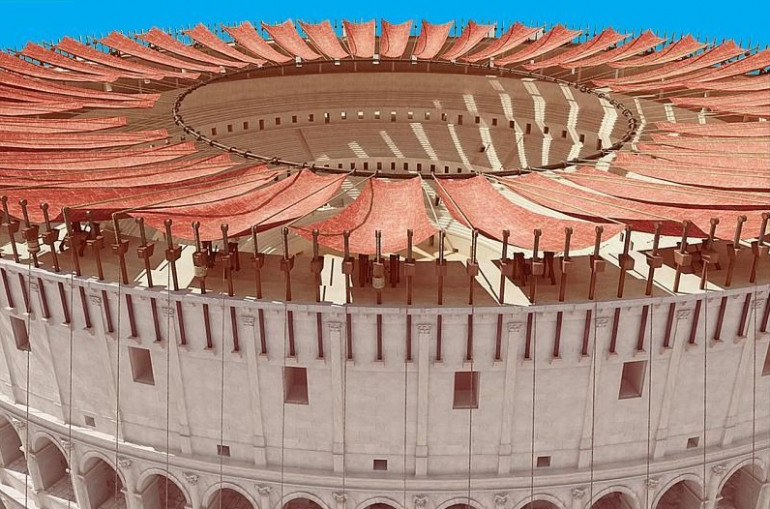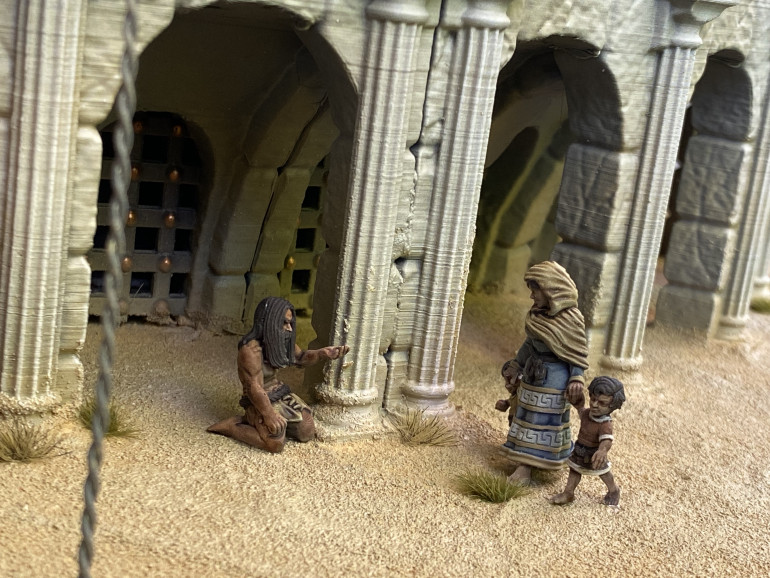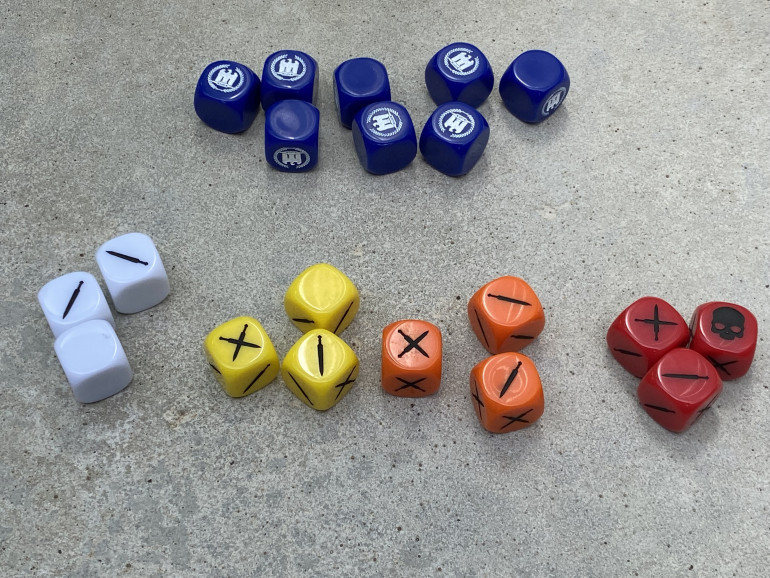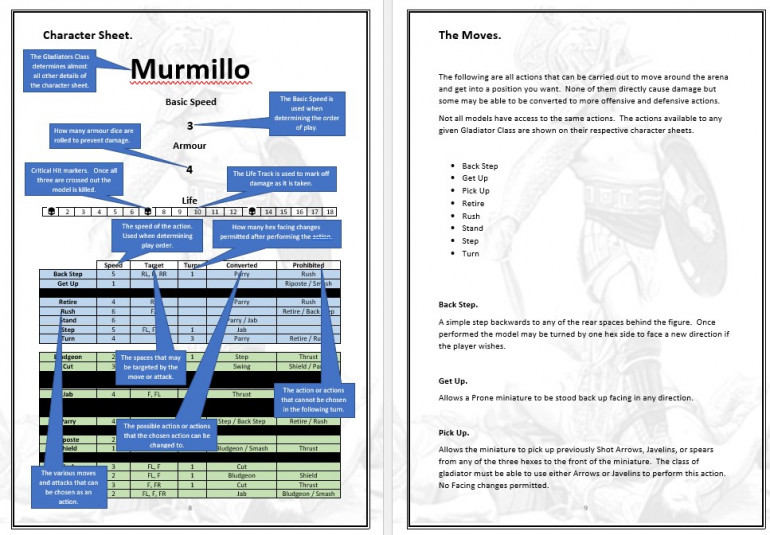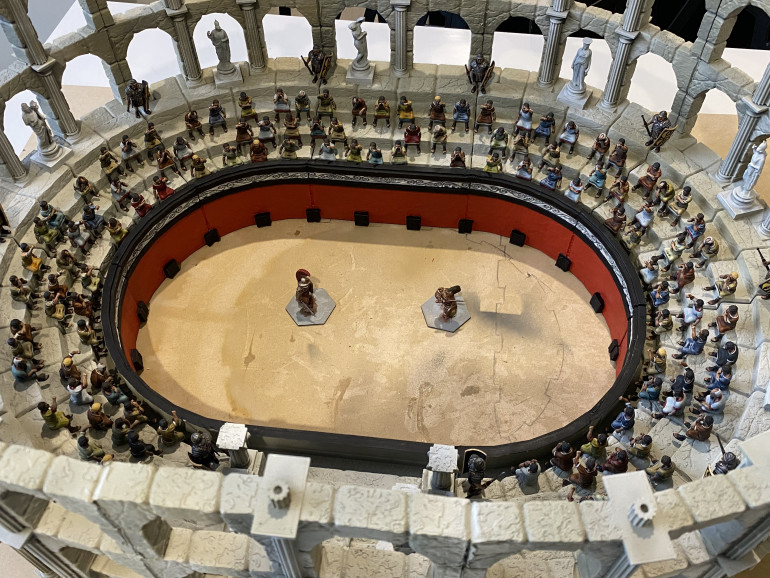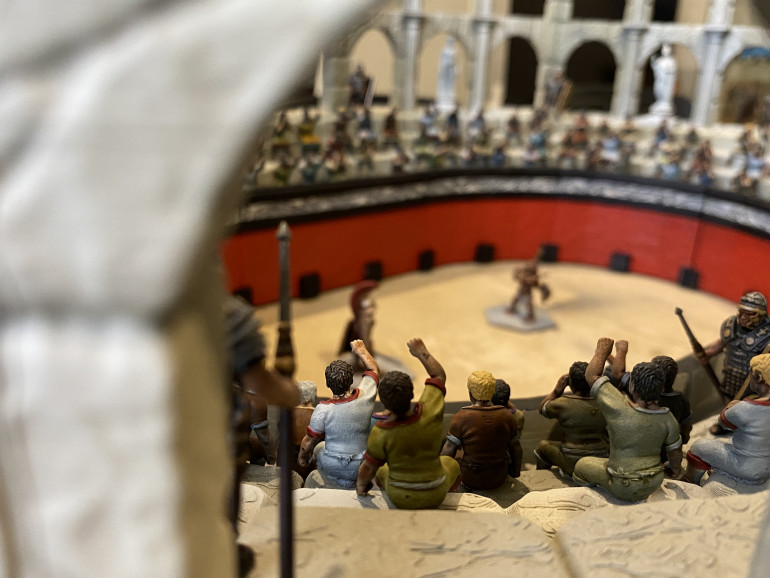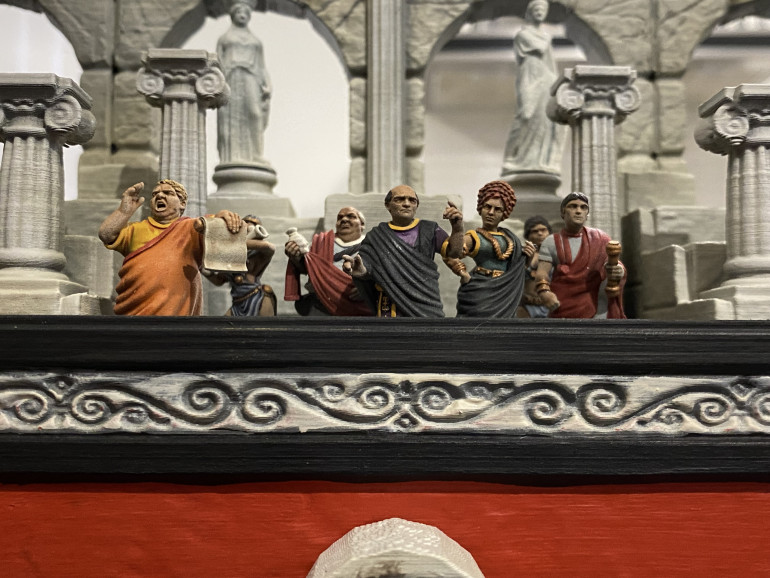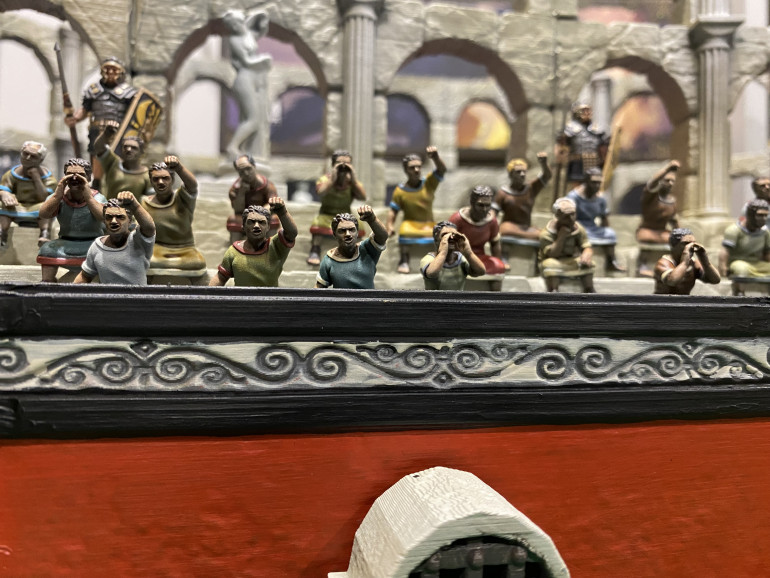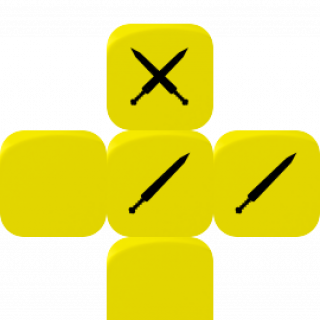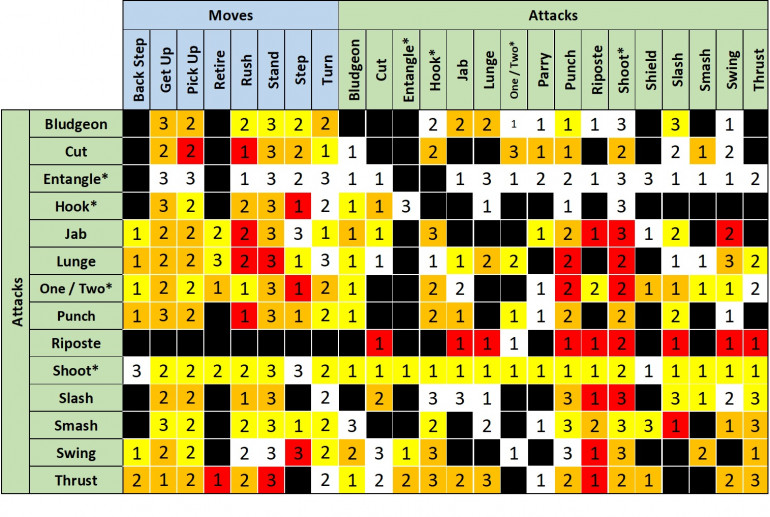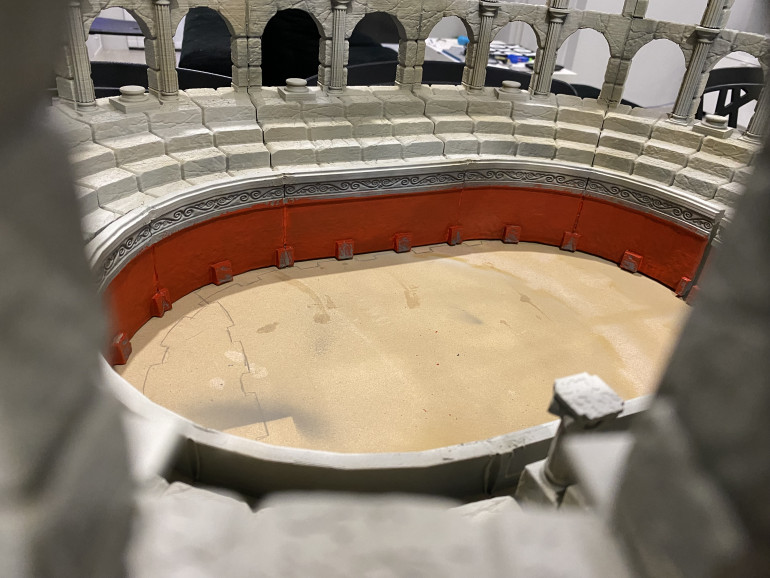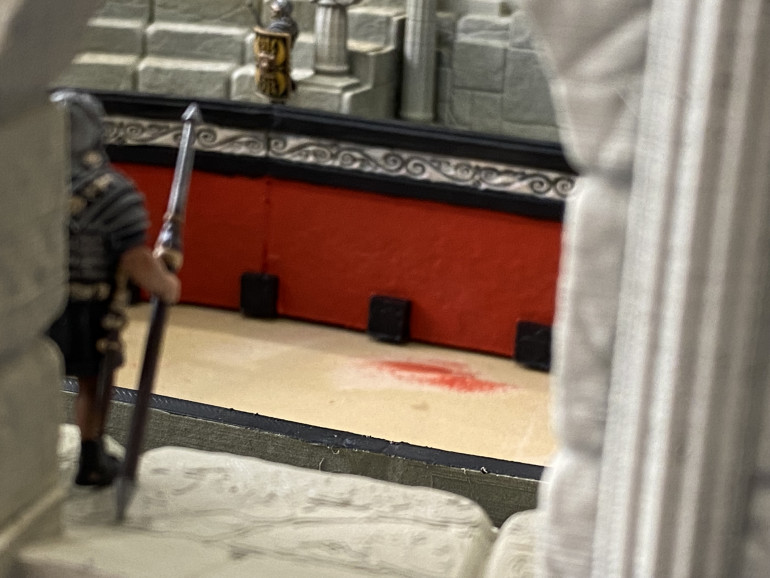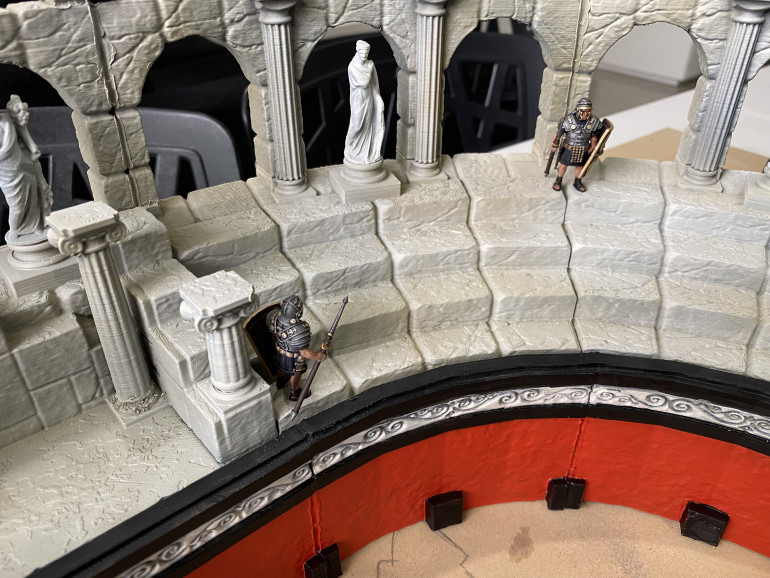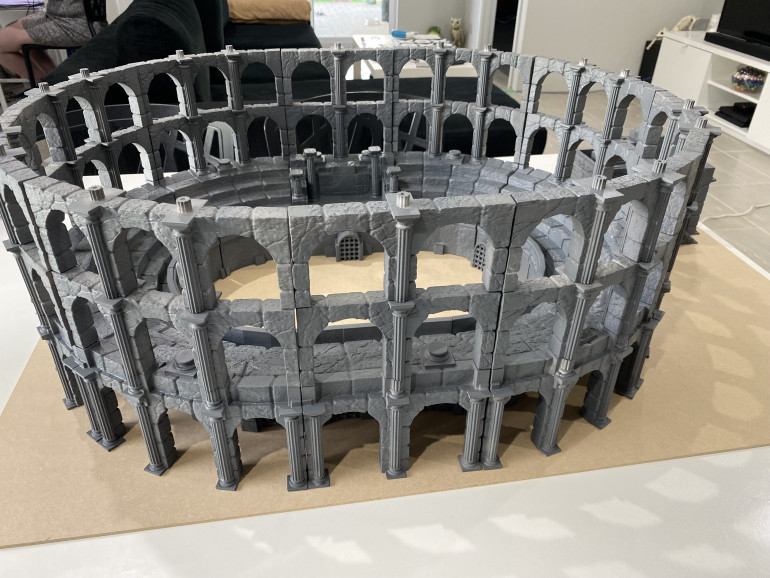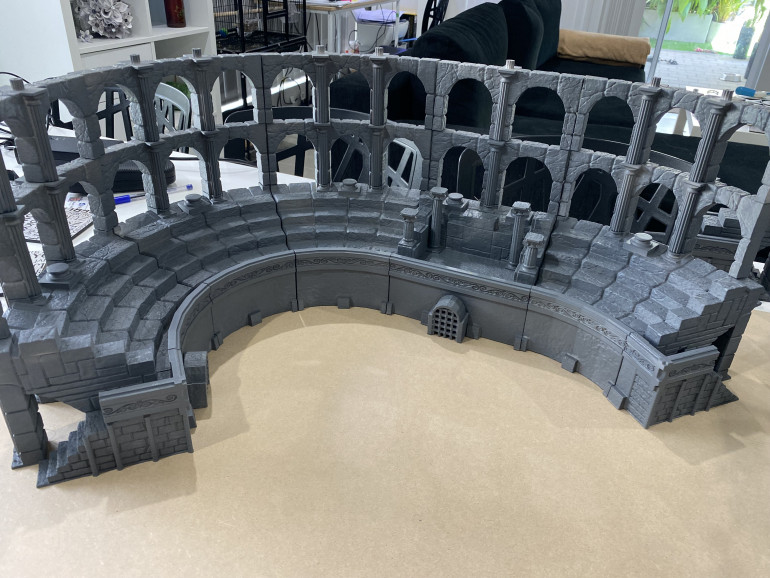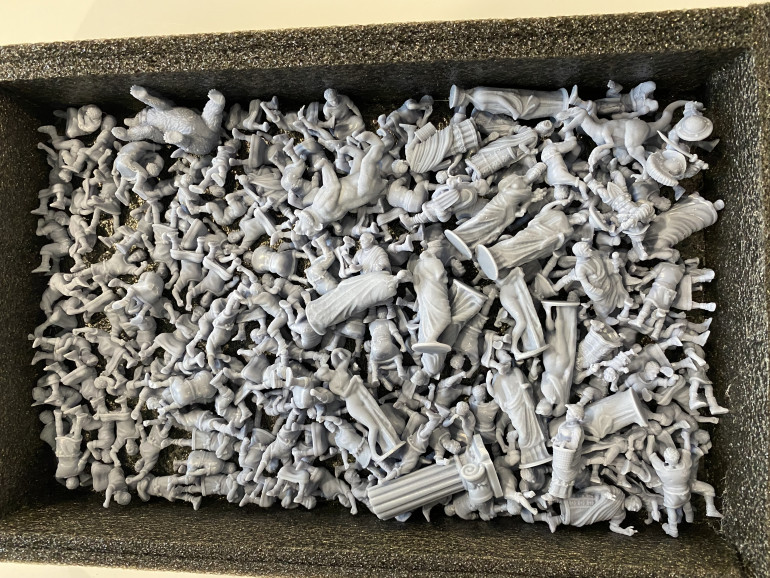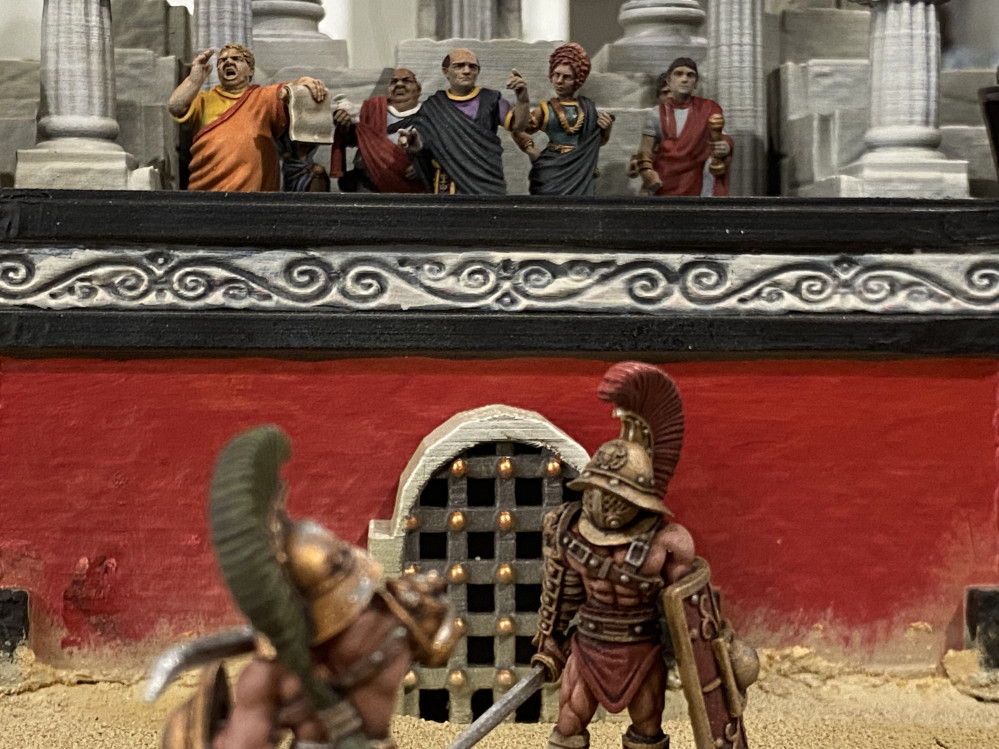
Morituri te salutant
Recommendations: 278
About the Project
Introduction. Many years ago, there was a set of Gladiator Skirmish rules simply titled; ‘Gladiator Skirmish Rules’. They were simply produced and easy to learn and provided fun little games to simulate gladiatorial combat. The game played on a simple hex grid and the fighting was done in the style of ‘Rock, Paper, Scissor’ where each player would pick an attack and compare it with each other to determine if the attack was easy, medium, or hard to pull off. This was then converted to a separate table where dice would be rolled and compared with the armour value of the target and the difficulty of the attack to generate a level of wound. Wounds would accumulate so that three nicks would become a cut, three cuts become a wound and so on. I really enjoyed that dated set of rules and was looking for something that I could play simple quick games, mainly with the kids, but with friends also. I wanted to keep the rules as simple as possible whilst keeping the feel of the original rules, or at least how I remember them to be. This is my homage to those rules. Some bits will be similar, some bits completely different (mainly because I can’t remember how they were originally) and some bits will be vaguely familiar. I intend to do my best to create a fun little self contained project using the little knowledge of our hobby that I have picked up over the years.
Related Genre: Historical
This Project is Active
Version 1.2
A few updates and amendments to the rules to improve gameplay and tidy up a few edges.
These update were done after the current gameplay so there may be few parts that are slightly different. However, the gameplay posts should still give an idea on how the game plays.
The fight continues
Following on from where we left off.
Despite the Hoplomachus’ attack failing to cause any damage he can still make use of the facing turn provided by this attack. Looking at the Slash action we can see that it allows 1 facing turn to the right after the attack is completed.
The Hoplomachus chooses to take full advantage of this facing change to open more attack options in the next round.
The Thracian however can only make a facing change to the left due to his swing action, this would turn his back on his opponent and leave him in a very vulnerable position.
We must also note that due to the Hoplomachus having thrown his spear he is no longer able to perform the Lunge or Shoot actions. Had his spear throw missed we would have rolled to see where it landed and placed a token there should the Hoplomachus wish to recover his spear in a later turn. However, the spear throw hit its target and we can assume that the Thracian broke the spear to prevent its use again. (I have made this ruling to avoid situations where two figures could potentially throw the same spear backwards and forwards until one of them dies.)
Once again Favour is calculated increasing the Hoplomachus’ favour by one for using an attack action against a valid target. It doesn’t matter that the attack generated no damage.
So, as it stands the Thracian has 0 Favour and the Hoplomachus has gained 3 favour.
The Thracian finding itself out of position opts for a Step action and scores 14 for its speed. The Hoplomachus chooses a Cut action, looking to deal more damage to the poor Thracian, and gets a total of just 7 for his speed.
The Thracian moves first, steps directly forward and changes its facing by one to its right.
This manoeuvre takes the Thracian completely out of the line of attack of the Hoplomachus. The Cut action only targets the space directly in front and the Thracian is now currently in the Rear right space. To make matters worse, the Cut action does not allow any facing changes.
The Hoplomachus is also unable to convert the Cut action to a swing action because this does not give him a valid Target.
Favour continues to remain unchanged.
The Thracian sees his chance and selects a Bludgeon Action, the Hoplomachus a shield action.
The Thracian easily wins the roll for speed and once again acts first.
Cross referencing the Thracians Bludgeon with the Hoplomachus’ shield action we can see this is an automatic miss because once again the square is blacked out. However, the bludgeon action can be converted into a Step action because the target of move actions is always an empty space. The Thracian steps once more and again makes a facing change.
The Hoplomachus ducks down behind its shields, but no attack is incoming.
Favour continues to remain unchanged.
From its now advantage point the Thracian once again selects the Bludgeon action, easily beating the speed of the Hoplomachus’ Step action.
The Thracian scores 3 hits from the two yellow dice it rolls, one hit is mitigated by the Hoplomachus’ armour.
This attack earns the Thracian 2 Favour. 1 for the valid attack and 1 for the 3 damage. It is irrelevant if the damage was subsequently mitigated by armour.
Favour stands at 2 for the Thracian and 3 for the Hoplomachus.
Next the Thracian selects a Step action to keep the Hoplomachus on the back foot. The Hoplomachus selects a turn action. The turn action is useful for making a 180 degree turn if an enemy gets behind you.
Once again, the Thracian is faster and acts first.
There is no change to favour.
Maximus Diceimus
As requested by Ben,
So we set about running a little fight as if we were doing a campaign.
First our noble Lanista, Biccus Diccus names his Ludus Sons of Hermes and records his 4000 Sestertii in his account.
The first season of any campaign is winter and a chance for Biccus Diccus to visit the slave markets to buy new fighters. In later seasons he could trade gladiators or buy gladiators from other players but as this is the start of the campaign, no one has any to trade just yet.
Biccus decides to spend half his funds on fighters.
He buys;
Priscus the Retarius for 300 Sestertii
Verus the Sagittarius for 200 Sestertii
Atrox the Murmillo for 350 Sestertii
Potens the Thracian for 350 Sestertii
Validus the Secutor for 350 Sestertii
Aspra the Hoplomachis for 350 for Sestertii
And to finish of Nigel the Noxii for 100 Sestertii just in case he must enter a fighter into the arena to fight to the death. Nigel will be the man to take one for the team.
A total of 2000 Sestertii spent to set up the school.
Biccus then decides to invest in some extra training for some of his Gladiators.
First, he invests 300 Sestertii in Priscus the Retarius to roll 1 yellow and 1 orange dice for upgrades.
Rolling the dice Biccus scores 1 hit on each dice for a total of 2 upgrades. He chooses Extra Health and Fast and records these on his campaign sheet.
Next Biccus invests 250 Sestertii in Potens the Thracian for 1 orange and 1 white dice and manages to score 2 hits. He selects Critical Strike and Fast and records these on his record sheet.
Feeling the gods are with him Biccus invests 450 Sestertii in Validus the Secutor picking up 1 red dice and 1 orange dice, hoping to get 3 or 4 upgrades. Unfortunately, it’s at this point the fickle gods look away and Biccus rolls a critical hit and 1 hit. Biccus records the damage taken to Validus on his record sheet and picks strong armour for his remaining successful hit.
Deciding that his luck may have run out Biccus stops training his fighters and reduces his funds by 1000 Sestertii and leaving 1000 Sestertii in the bank.
Finally Biccus must pay the upkeep costs for his Ludus. A further 300 Sestertii is deducted from the books leaving just 700 Sestertii in the bank. Thankfully Nigel the Noxii can live on scraps and requires no upkeep for the coming year.
Once all the players have set up their Ludus time moves forward into the Spring season and the games commence.
With 3 players in the campaign there will be a total of 4 fights this season.
Rolling the dice gives results of
Medium vs Heavy with 600 Sestertii initial prize.
Heavy vs Heavy with a 650 Sestertii initial prize
Light vs Light to the death with a 600 Sestertii initial prize
And
2 light vs Heavy with a 700 Sestertii initial prize.
All players place their bids in secret for the fights to come.
In the first bout it looks like Biccus has become Player 1 with a 100 Sestertii bid and chooses a medium weight fighter to enter the arena. Looking at his roster he selects Potens the Thracian and hopes that his recent training will see him in good stead.
His opponent picks a heavy fighter, in this instance a Hoplomachus. This could be a tough fight for Potens.
Both players set their fighters up at opposite sides of the arena and select their first actions. Being so far apart both sides elect to Rush.
Rolling for Speed the Thracian rolls a 6, plus 6 for the actions speed plus a further 5 for the Thracians basic speed for a total of 17. (Remember Potens has the fast upgrade otherwise his basic speed would have been 4)
The Hoplomachus also manages to roll a 6 giving him a total speed of 14.
Both fighters move forward 2 spaces, the Thracian first followed by the Hoplomachus.
Both Fighters then check to see how much favour from the crowds they receive for their chosen actions, in this case both receive 0 and a new round starts.
Once again both players select their actions in secret. The Thracian aware that the Hoplomachus has a spear that he could use to perform a Lunge attack chooses to slow down his advance and selects a step action.
The Hoplomachus expecting the Thracian to continue his advance does indeed choose the Lunge action, hoping to get an early hit in before they get into close quarters.
The actions are revealed, and Speeds are rolled resulting in the Thracian having a total of 12 and the Hoplomachus a total of just 6.
The Thracian chooses to take a step to his front left, out of the way of the Lunge attack coming from the Hoplomachus.
In return the Hoplomachus is unable to convert his Lunge attack into a valid action so lunges uselessly into thin air.
Once again Favour is calculated and once again neither fighter has gained or lost any so they both remain with 0 favour.
A new round starts, and the Thracian decides to push forward his attack and chooses a rush action.
The Hoplomachus, frustrated with his missed lunge decides to take a shoot action to hurl his spear at the Thracian.
Speeds are calculated with the results being that the Thracian will act first with a speed of 12 followed by the Hoplomachus with a speed of 10.
The Thracian rushes forward and is met by the pointy end of a thrown stick.
The Hoplomachus cross references his shoot action with the Thracians rush action and sees that he must roll 2 yellow dice to hit the Thracian. Rolling the yellow dice scores an impressive 3 hits.
3 hits have the potential to kill the Thracian in one shot because each hit then enables the Hoplomachus to roll 1 red dice to score damage. Thankfully the 3 red dice fail to score any critical hits, however they still inflict 5 hits on the Thracian.
The Thracian has an armour value of 3 and rolls to mitigate damage. However, the Hoplomachus’ aim is good, and the Thracians armour only manages to deflect one point of damage.
The Thracian marks off the 4 damage. Note although this crosses out one of the skull icons on the health track it is not a critical hit. Critical hits are only caused by dice rolls of critical hits.
This round the Hoplomachus has gained 2 favour of the crowd whilst the Thracian is yet to gain any.
Once again, a new round starts. The Thracian selects a Swing action whilst the Hoplomachus chooses to Slash. After calculating speeds, we see the Thracian once again gets to go first. Cross referencing his chosen Swing action with the Slash action is an automatic miss. (The square is blacked out) with this in mind the Thracian looks to see that he can convert his Swing action to a Cut action. Unfortunately, the Cut action can only target the space directly in front of the Thracian so our unlucky fighter has chosen unwisely this turn.
In return the Hoplomachus gets to roll 2 white dice to damage the Thracian. However, both dice fail to score any hits.
Rules Draft - version 1.1
For anyone even vaguely interested here is the first draft of my rules set re-write.
Please feel free to give it a go and point out any errors or typos.
EDIT ** These have been updated since adding this. I will endeavour to get the latest version up soon. ***
I'm Spartacus....and so is my wife.
The Thracian is next.
Probably a fan favourite the Thracian is the class of gladiator that Spartacus was. Armed with a curved sword and small shield. Slightly less armour than the Murmillo but also slightly faster.
Velite.
Velites are light gladiators armed with javelins and a short sword. They also carry a shield giving them some protection. Often used in pairs against more heavily armoured gladiators. In my rules the javelins can be thrown or retained to attack from a distance.
Of course, there are still many more to do. The Retiarius, what gladiator game would not be complete without this iconic fighter with its trident and net. The Diamachaerius with its twin swords. Then of course there are the Gladiatrix, female fighters although rare must be featured (especially when you have two daughters). Then animals, Lions and Bears were favourites as were Giraffes, Ostrich, and Elephants, although I will probably leave those out.
The all the other bits and pieces. The Summa Rudis (referee), bits of scenery so that those fighting against the Sagitarius have some hope of survival. The list goes on.
All will require there own rules and record sheets.
Heavy Metal
The Provocator.
One of the heaviest gladiator classes in my game, but also one of the slowest. Armed with a straight sword, large shield, and decent armour.
Sagittarius.
The Sagittarius is an unusual one as they normally fought mounted. This didn’t really fit with my rules, so I opted on a little poetic licence and designed two types. The fast and lightly armoured Sagittarius and its slightly sturdier Armoured Sagittarius. Armed with a bow and five arrows this gladiator can target anywhere in the arena. Better make those arrows count though, as once that are spent, I don’t favour the chances of surviving with a bent stick and piece of string.
Scissor.
Also called the Contra-retiarius is a special gladiator type that is ideally suited for fighting against the Retiarius. Slow but with good armour and a special action for countering net attacks.
Secutor.
The Secutor is also designed to fight the Retiarius and had a smooth helmet so that the Retarius net would not entangle it and small eye holes with restricted view. In my game this gladiator is slow to react but has good armour.
Are you not entertained.
Next up it was time to expand on the available combatants.
First up, the Cestus.
The Cestus wear heavy knuckleduster type gloves but little or no armour. They were most often used in fights against slaves where they would literally beat their opponents to death.
Eventually they were banned because of the excessive brutality. Hard to imagine given how brutal the condemned were treated.
Next the Hoplomachus.
The Hoplomachus carried a spear, sword, and shield. Often with quilted armour on the legs. This is a heavily armoured fighter, and this is reflected in my rules by its slower speed but better protection. The spear can be thrown or used to attack its opponent whilst staying somewhat out of reach.
After that is the Murmillo.
The Murmillo was often paired against the Hoplomachus or Thracian. This is probably what most people imagine when they picture Gladiators. Armed with the Roman gladius sword and scutum large shield. This is a medium weight gladiator in my rules with average armour and speed.
Noxii.
The condemned. Ill-treated, poorly trained, and condemned to die. Crude weapons, often blunest the poor wretches have little hope of survival. In my rules these always start the game in poor shape. With low speed and no armour don’t expect them to last long. However, they are cheap.
Thankyou
First of all, I would like to say a massive thankyou for the Golden Button.
I am incredibly grateful and honoured that my little project has been picked. I hope it can inspire other people to have a go at creating their own rules or games, just for fun.
I still have a fare amount to do on this project, but it all seems to be small fiddly bits and rules tidy ups. My current rulebook comes in at 8673 words spread over 60 pages. I have included a lot of examples throughout the entire book and am now going through adding photographs before moving onto the campaign rules. I know it sounds like a lot, but I have tried my best to use simple language throughout so that my kids can also pick up the rulebook and understand it. Once you understand how each turn is played out the rules will then merely be there for reference.
I also wanted to have the option to allow a simple AI system to control wild animals in the arena so that effectively the players could all be on the same side. My kids like the idea of being on the same team and working together to go on adventures and solve problems.
Anyway, enough ramblings.
Hexes
For the arena floor I used thin hexagonal MDF bases glued to an oval of MDF. I then lightly covered the surface with sand and painted it to match the rest of the ground covering.
I then based up some Gladiators to use so I can start play-testing my version of the rules.
The fighters are mounted on 40mm Hexes, and the arena floor is slightly larger at 45mm.
I have kept the actual fighting area reasonably small, just 8 hexes at its longest point. I will add some scenery elements to separate hexes so that they can be moved around and add extra strategic elements. The scenery should come in handy when fighting against Sagittarius (Bow armed) gladiators.
Velarium
Initially I bought some nice deep red cotton fabric, however I found that it frayed a lot. I toyed with the idea of using fabric glue to hem around the edges, but figured I was just too lazy to do that.
A trip back to the haberdashery and I found an alternative material that I was reliably informed would fray less.
With that I cut 4 sections of material to fit around as awnings.
2 longer pieces that would be firmly and permanently attached and 2 smaller pieces that I would hide a small wire frame beneath that could be removed to take the Colosseum apart.
Once in place I used the same rattle cans that I had used to paint the base to lightly dust over the red cloth to act as weathering.
Awning
I really wanted to add sunshades or Velarium, to my Coliseum but because I also wanted to be able to split the model apart it would not be possible to have a weighted ring acting as a counterweight.
I looked back at the rigging I had done for my Blood and Plunder ships and decided to twist lengths of wire together to imitate rope. From those I could simply attach material beneath it to look like a shade cloth.
I used small heart shaped beads and BBQ skewers, cut down to size, to bend the wire ‘ropes’ over.
I anchored the wires to the base by drilling holes and screwing the wires into place.
The base was finished with sand and painted with sand coloured paints from rattlecans.
A few scattered grass tufts and a couple of figures finished the base off.
Dice
Dice are done and I must say I am really happy with them.
I have gone with 3 of each of the combat dice and 8 armour dice.
Although the maximum armour dice I currently have on any gladiator class is 5, I wanted scope to increase that during campaign play.
Sample rules page
Of course each style of gladiator would need its own range of attacks, manoeuvres and other identifying abilities.
The character sheets would show the speed, armour, life points, available actions and a whole host of other details needed to play each class. After all I am aiming for a simple set of rules where as much as possible can be contained on one sheet of paper.
Plebs
With the stonework pretty much finished I set about painting up the many spectators.
I used grey primer with a zenith highlight in off white. I then painted the entire crowd in a mixture of contrast paints and ink washes.
I didn’t go in to too much detail with these models as they would likely be seen slightly out of focus in the pictures anyway.
I stuck with a pretty limited Palette for the majority of the Plebs but added a few other colours for the occupants of the Imperial box.
I was quite happy with the overall effect once the crowd had been added.
Dice
I started going over the rules I had in my mind and decided that I wanted to simplify how damage was worked out.
In the original rules the process was that each player would select an action. Those actions were then cross referenced which would give a difficulty. Then that difficulty was compared on a separate table and a D20 was rolled which would then cause a category of injury dependant on the defender’s armour level. The lowest wounds were Nicks. 3 Nicks became a Cut, 3 Cuts become a Wound and 3 Wounds would result in death.
I wanted to change all that to just one chart and one dice roll.
I decided that I would use colour coded dice to represent how likely the attack was of causing damage and how serious the damage could be.
With my version each fighter still choses an action which is cross referenced to give both a colour and a number.
White dice are the weakest, through to red dice which are the strongest.
Then the defender rolls defence dice (blue) to try to mitigate damage.
For example, there would be a matrix like this to cross reference each players chosen action which would in turn dictate how many and what colour dice are to be rolled. Some actions would have blacked out sections to show that those actions automatically fail against certain actions.
Of course this is not the final combat matrix, but should give some idea of how it will work.
Adding Colour
I used simple rattle cans to paint the stonework. I started with a cheap grey primer from the local hardware store and then used sand-coloured sprays to build up highlights.
I finished off with a light zenith highlight with an off-white spray.
Painting the stonework took less than 30 minutes thanks to the ridiculous Perth heat.
The inside wall of the arena was painted red with a black trim. Again I used cheap paints from the local hardware store.
For the many statues that adorn the walls I again used rattle-cans, starting with a blue-grey and working up to white.
I then Painted up 10 Roman Legionnaires to act as security for the Colosseum. I used colours more akin to Pretorians because I figured that regular legionnaire would not have been used.
I added entranceways so that the combatants could actually enter the arena.
And of course I couldn’t help but paint up a couple of Gladiators, just to keep me motivated.
Rome wasn't built in a day
For this little project I really wanted to rewrite the rule book (for personal use) with my own version of what I wanted the game to be and bring it up to date.
The original rules were simply walls of black text on white paper and very dated by todays standards.
For my homage to the original rules, I really wanted to do the best I could so adding colour pictures was a good place to start.
Sure, I could have opted for a simple two-dimensional backdrop for the photos, but I wanted to do something a little grander, something to draw the crowds.
Thankfully the skilful mind of Iain Lovecraft had already created the STL files that would be instrumental in this project.
I set my little Ender 3 Pro to work.
The final structure consists of more than 30 different parts. I wanted my Colosseum to come apart to allow easier access to the play area that I intend to put inside it. So extra end sections were printed off to give a nice finish to the structure when it was broken down.
My initial thought was to create it in such a way that it could be split into 3 different pieces, however I finally settled on splitting the Colosseum in half.
With the stonework printed off and welded together I set my Elegoo Saturn to printing off the many Peons, Statues and other ‘miniatures’ I though I would need for this project.
At 28mm (rather 32mm scale if I’m honest) this is a pretty massive structure.









































